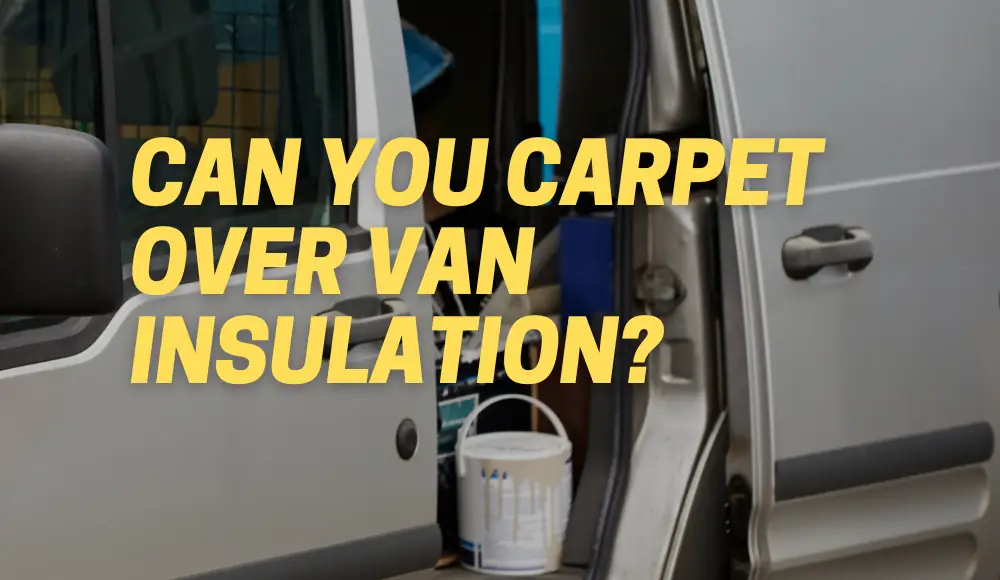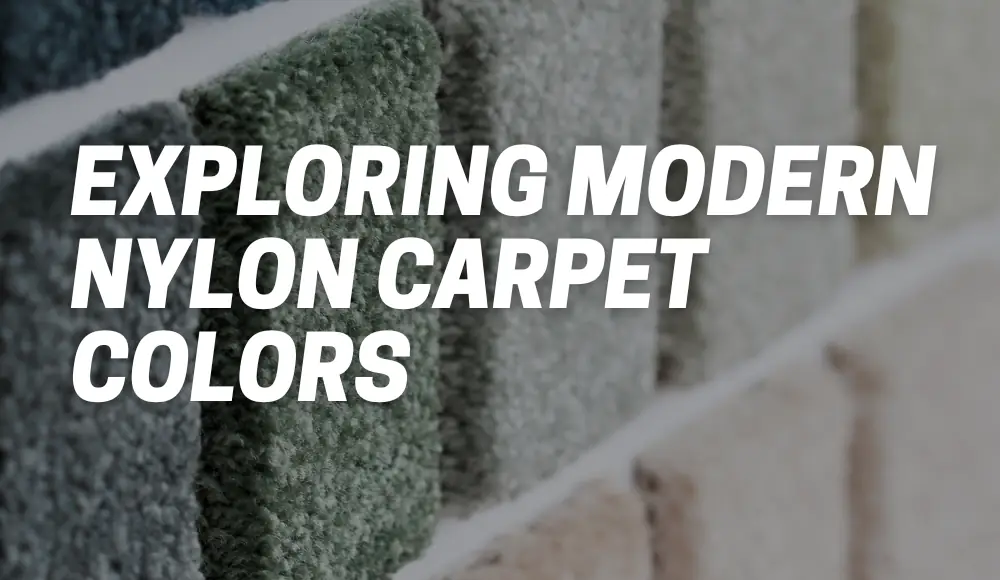If you’re in the process of converting your van into a cozy living space, one important aspect to consider is the insulation. Proper insulation not only keeps the van comfortable but also plays a crucial role in regulating temperature and reducing noise. But what about the aesthetics? Can you carpet over van insulation without compromising its effectiveness?
In this article, we’ll delve into this question and provide you with insights on the best materials for lining a van, the need for a vapor barrier during carpet van insulation, and the steps involved in carpeting over van insulation.
Understanding Van Insulation
The Purpose of Van Insulation
Van insulation is a crucial component for anyone who wants to convert their van into a livable space.
The purpose of insulation is to regulate the temperature inside the van, keeping it cool in hot weather and warm during chilly nights. Insulation also helps to reduce noise and protect against moisture, making it an essential part of any van conversion project.
Installation and Location
Van insulation can be installed anywhere that heat or cold air enters or exits the vehicle. Common locations include walls, floor, ceiling, doors, windows, and wheel wells.
Installation typically involves cutting the materials to size before fitting them between supports or attaching them directly onto surfaces with adhesive or other fasteners.
It’s important to note that improper installation can lead to air leaks which compromise the entire system so if one decides on doing this themselves they should do enough research on how it’s done properly or hire a professional instead.
What is the Best Material for Lining a Van?
When it comes to lining a van, there are several materials you can choose from, each with its own set of benefits and considerations.
The most popular materials for van lining include:
- Plywood: Plywood is a versatile and cost-effective option for lining the interior of your van. It provides a sturdy base for attaching other elements such as insulation and carpeting.
- Metal Panels: Metal panels are a durable choice for van lining, especially if you’re looking for added protection and longevity. However, keep in mind that metal panels may require more effort to install and may add weight to your vehicle.
- Fiberglass: Fiberglass is a lightweight and moisture-resistant material that can be molded to fit the contours of your van. It provides excellent insulation properties and is commonly used in camper van conversions.
- Vinyl: Vinyl lining is an attractive and easy-to-clean option that offers decent insulation properties. It’s a popular choice for van conversions where aesthetics play a significant role.
Ultimately, the best material for lining your van depends on your specific needs, budget, and personal preferences.
Consider factors such as insulation effectiveness, durability, weight, and visual appeal when making your decision.
Do You Need a Vapour Barrier When Insulating a Van?
Yes, incorporating a vapor barrier into your van insulation is highly recommended.
A vapor barrier is a material or layer that prevents moisture from seeping into the insulation and causing potential issues such as mold, mildew, or rot.
By creating a barrier between the interior and exterior of your van, a vapor barrier helps maintain a dry and comfortable living space.
When installing insulation in your van, it’s crucial to follow proper procedures to ensure the effectiveness of the vapor barrier.
Here are a few key points to keep in mind:
- Choose the right material: Select a vapor barrier material that is specifically designed for the purpose and has high moisture resistance. Common options include plastic sheeting, foil-faced insulation, or specialized vapor barrier membranes.
- Seal all seams and joints: To prevent any potential gaps or leaks, make sure to seal all seams and joints with high-quality tape or adhesive. This will help maintain the integrity of the vapor barrier.
- Consider the climate: The climate in which you’ll be using your van plays a role in determining the type and thickness of the vapor barrier. For example, if you frequently travel to areas with high humidity, you may need a more robust vapor barrier to prevent moisture buildup.
By incorporating a vapor barrier into your van insulation, you can protect your investment and create a comfortable living environment for your adventures.
Can You Carpet Over Insulation in a Van?
Yes, you can carpet over insulation in a van.
In fact, carpeting over the insulation offers several advantages, including enhanced aesthetics, improved acoustics, and increased comfort.
However, it’s essential to consider the impact carpeting may have on the insulation’s effectiveness.
Insulating And Carpeting The Van Ceiling
—
How Does Carpeting Affect Van Insulation?
Carpeting can have both positive and negative effects on van insulation.
On the positive side, carpeting adds an extra layer of insulation, helping to reduce heat transfer and improve thermal comfort inside the van. It also helps absorb sound, reducing noise from both the road and the living space.
However, carpeting can also trap moisture if not installed properly or if there are existing moisture issues in the van.
Moisture accumulation can lead to mold growth and compromise the insulation’s effectiveness. Therefore, it’s crucial to ensure proper ventilation and address any moisture-related concerns before carpeting over the insulation.
What are the Benefits of Carpeting Over Van Insulation?
Carpeting your van’s interior offers several benefits beyond aesthetics. Here are a few advantages of carpeting over van insulation:
- Improved Comfort: Carpeting provides a soft and cozy surface that adds an extra layer of comfort to your van. It’s pleasant to walk on and makes the space feel more like a home.
- Enhanced Acoustics: Carpet helps absorb sound, reducing echoes and noise from both inside and outside the van. This creates a quieter and more enjoyable living environment.
- Insulation Enhancement: Carpet acts as an additional insulation layer, reducing heat transfer and maintaining a more consistent temperature inside the van. It can help keep the van warmer in winter and cooler in summer.
- Aesthetically Pleasing: Carpeting adds a touch of style and warmth to the interior of your van. It can transform a utilitarian space into a cozy and inviting living area.
What are the Steps Involved in Carpeting Over Van Insulation?
Carpeting over van insulation involves a series of steps to ensure a successful installation. Here’s a general overview of the process:
- Prepare the Surface: Before installing the carpet, make sure the insulation is properly installed and any moisture issues are resolved. Ensure that the surface is clean, dry, and free from debris.
- Measure and Cut: Measure the dimensions of the van’s interior and cut the carpet accordingly. It’s recommended to leave a slight overhang to ensure a snug fit.
- Apply Adhesive: Apply carpet adhesive to the van’s surface, following the manufacturer’s instructions. Spread the adhesive evenly, ensuring full coverage.
- Install the Carpet: Carefully lay the carpet over the adhesive, starting from one end and working your way across. Smooth out any wrinkles or air bubbles as you go.
- Trim and Finish: Trim any excess carpet using a sharp utility knife or carpet cutter. Make precise cuts around obstacles such as windows, doors, or fixtures. Finally, secure the edges of the carpet using appropriate trim or molding.
Remember to follow the specific instructions provided by the carpet manufacturer and use the recommended tools and materials for a successful installation.
Tips for Ensuring a Smooth Installation Process
Here are some tips to keep in mind for ensuring a smooth installation process:
- Work in small sections rather than trying to install the entire carpet at once
- Use a straight edge or ruler to make sure your cuts are straight and accurate
- Make sure your van interior is completely dry before installing the carpet
- Allow the adhesive to dry for at least 24 hours before using your van again.
By following these steps and tips, you should be able to successfully carpet over your van insulation and enjoy a comfortable ride in style.
Do I Need to Remove Existing Insulation Before Carpeting the Van?
In most cases, it’s not necessary to remove existing insulation before carpeting the van.
As long as the insulation is properly installed and in good condition, you can carpet directly over it. However, it’s crucial to ensure that there are no underlying issues such as moisture or mold that may affect the carpeting.
If you’re unsure about the condition of the existing insulation or suspect any problems, it’s recommended to consult a professional or consider replacing the insulation before proceeding with the carpeting.
Are There Any Specific Materials or Tools Required for Carpeting a Van with Insulation?
To carpet your van with insulation, you’ll need the following materials and tools:
- Carpet: Choose a carpet that is suitable for the environment and easy to clean.
- Carpet adhesive: Select a high-quality adhesive designed for the specific type of carpet you’re using.
- Utility knife or carpet cutter: These tools will be essential for cutting and trimming the carpet.
- Measuring tape: Use a measuring tape to determine the dimensions of the van’s interior and cut the carpet accurately.
- Appropriate trim or molding: Secure the edges of the carpet and provide a finished look using suitable trim or molding.
- Cleaning supplies: Before installation, ensure that the van’s interior is clean and free from debris.
Ensure you have all the necessary materials and tools before starting the carpeting process to make the installation smooth and efficient.
Van Carpet Installation Checklist
| Materials/Tools | Purpose |
|---|---|
| Carpet | Provides comfort and aesthetics |
| Carpet adhesive | Bonds carpet to the van’s surface |
| Utility knife/carpet cutter | Cuts and trims the carpet to fit the van’s interior |
| Measuring tape | Accurately measures the dimensions of the van’s interior |
| Trim/molding | Secures carpet edges and provides a finished look |
| Cleaning supplies | Ensures a clean surface before carpet installation |
Conclusion
Carpeting over van insulation is a viable option that adds both comfort and style to your van conversion project. By selecting the right materials, incorporating a vapor barrier, and following proper installation techniques, you can create a cozy living space while maintaining the insulation’s effectiveness.
Remember to consider factors such as moisture control, insulation enhancement, and acoustics when making decisions about van carpeting.
With careful planning and execution, your van will become a comfortable home on wheels, ready for your adventures.



